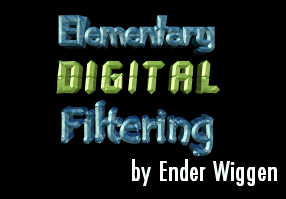11/10 - 11/12 @ Montréal, Canada
12/5 - 12/7 @ Shanghai, China
12/24 - 12/27
2/28 - 3/4 @ San Francisco, CA
More events...
2406 articles in the reference section.
Help us fight cancer!
Join SETI Team GDNet!

|
This is a technique that is not used enough in real-time graphics applications. Digital Filtering produces dramatic special effects and can be used for many other uses - such as edge detection and adjusting sharpness/contrast. Credit is given to Modern Image Processing: Warping, Morphing, and Classical Techniques by Christopher Watkins, Alberto Sadun, and Stephen Marenka, for the research for this article. Digital Filtering has many uses. It is often used for special effects, edge detection, and adjusting image sharpness or contrast. However, there is one major obstacle: it's slow. Even with optimizations in place, it may be too slow for use in real-time graphics applications, such as a game with a 3D engine. However, there are strategic methods that are used so that such a thing is possible. It is just very difficult to do. However, the overall process of digital filtering is easy to understand, and it opens up many new ideas for real-time graphics programs. Eyepopping results can be made quite easily and in a very short amount of time. This is not exactly new information, for it has been around for years. However, it still produces dramatic special effects and can be used for many programs. |
|||||||||||
|
|
|||||||||||